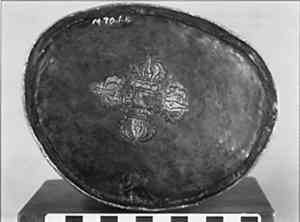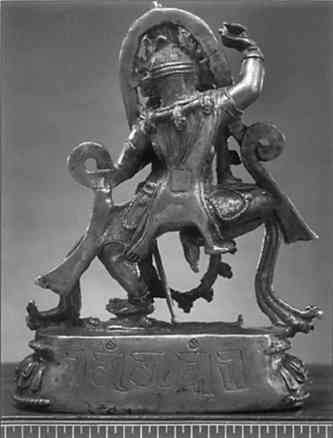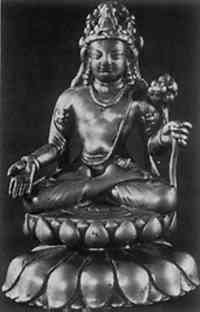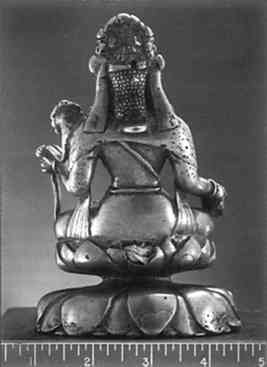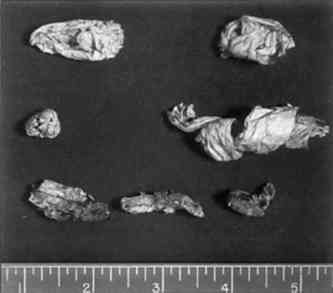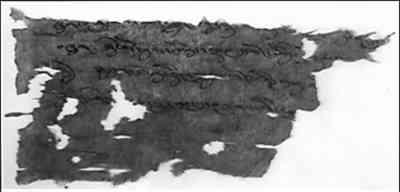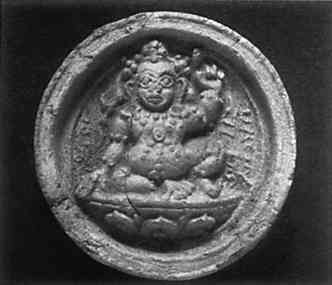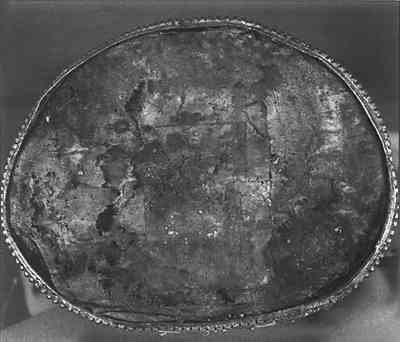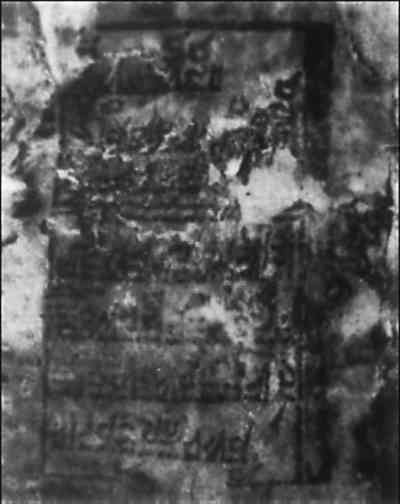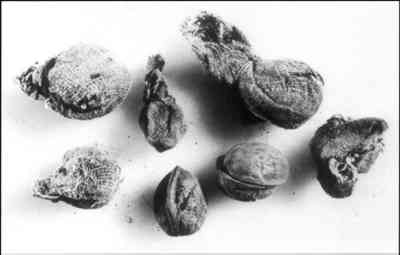THE OPENING OF CONSECRATED TIBETAN BRONZES WITH INTERIOR CONTENTS: SCHOLARLY, CONSERVATION, AND ETHICAL CONSIDERATIONSCHANDRA L. REEDY
3 OPENING OF STATUES AT THE LOS ANGELES COUNTY MUSEUM OF ART3.1 BACKGROUNDTIBETAN STATUES have at times been opened in museum conservation laboratories or by private collectors, and the consecrated objects have been removed for scientific or art historical study or simply to see what is there. The goal has sometimes been to help Scholarly considerations begin with the identification of the wide range of objects that have been found inside statues. Beyond identification may be more in-depth art historical or technical studies of the objects. The major conservation issues are to determine how much damage opening a piece will entail and whether the results will be worth the permanent change. Another problem to be considered is how fragile objects removed from the piece, such as disintegrating paper scrolls, will be handled and stored. Equally important to the conservator are the ethical issues, since in a museum the conservator generally makes important contributions to the final decision about whether a consecrated statue should be tampered with and usually opens the piece. The primary ethical questions involved are whether opening a statue will desecrate it in the eyes of the practitioners who made and used it and in the eyes of their descendants, whether we should care if they consider the opening a desecration, and whether the information to be gained justifies any desecration. These ethical issues are discussed in section 4, which reports on the viewpoints of living practitioners. The types of objects encountered when studying consecrated statues are illustrated in this section, with a discussion of pieces that have been opened at the Los Angeles County Museum of Art. 3.2 MATERIALS AND METHODSDuring a six-year regional provenance study of 340 Himalayan statues from several museums and private collections (Reedy n.d.), all pieces were examined for physical evidence relating to a consecration ceremony. One hundred sixty-nine of the 340 statues are solid, so they could never have had interior contents. The 171 hollow-cast pieces were studied through surface examination and x-ray radiography to identify the presence of any remaining interior contents. Many hollow statues with no contents also have no bottom baseplate. All most likely once contained objects that were removed along with the baseplate. Some statues that are missing a baseplate still have bits and pieces of their former contents adhering to the interior walls of the piece or lodged in the top of the head. For those statues it is thus possible to identify and list at least some of the types of objects they once held. As part of the provenance study, two statues, one belonging to the Los Angeles County Museum of Art and one from a private collection, were opened for a thorough study of the contents. Subsequently, six more statues from the museum's collection were opened at curatorial request, some of which were part of the provenance study and some of which were not. Prior to the provenance study, two other museum objects had been opened; one other object had arrived at the museum already opened, and although the accompanying contents were said to have been removed from that piece, there was no documentation to prove it. The contents from the 10 documented openings will be discussed in detail here and compared with the contents from several pieces that were opened elsewhere and documented. 3.3 MODE OF INSERTIONContents were almost always inserted from the underside of the piece, and the statues were then sealed by an unalloyed copper plate set into the bottom rim of the base (fig. 1).
Twenty-nine statues in the provenance study have a hole or plugged-up hole on the back, which sometimes might have been used to place contents inside (fig. 2). Dagyab (1977, 1:33) reported that although sacred objects are usually placed inside a piece through a lotus base, statues without a lotus seat have openings on the back through which objects are inserted. In the provenance study we found that not all statues with back holes have interior contents or evidence that contents were once present; other statues have both a back hole and a lotus base.
However, in some cases objects could only have been placed inside a piece though the back hole. For example, a Tibetan image of the great female teacher Ma-chik Lab-kyi Dron-ma was found to be filled with organic material in the upper portion of the figure. Although the base is hollow, the legs are solid. Since there are no other holes in the object, and the organic material is not part of the remains of a clay core, it must have been placed inside the piece through the hole at the center of the back. In other statues, some but not all of the objects may have been placed inside through the back hole, with the remainder of the objects being inserted through the underside of the base, which was then sealed by a copper plate. One west Tibetan seated Buddha image has both a back hole and a hollow base, with many objects placed inside the piece. A small metal statue found inside is too large to fit through the back hole and must have been inserted through the base. However, many other smaller objects found inside could have been inserted from the back. In some cases an outline of a hole is chiseled onto the back, but the marks do not completely penetrate the metal. A few solid-cast pieces had a large back patch that has now fallen off, but obviously no contents were actually inserted into a solid statue. For these cases, the purpose of the back hole is unclear. It is possible that this feature was meant to provide the appearance of a statue containing consecrated objects when in fact none were placed inside; or perhaps objects were inserted through the base but for some reason the participants in the ceremony wished to have it appear that they were placed into the back; or the outline may just be a stylized rendering of a ceremonial practice. 3.4 RESULTSThe interior contents of the 10 objects opened at the Los Angeles County Museum of Art are summarized in table 1. The contents of the two opened as part of the provenance study are described in detail, and highlights of the remaining ones are elaborated on. Information obtained through surface examination and x-ray radiography of additional objects is also discussed. TABLE 1 Interior Contents of Objects Opened at the Los Angeles County Museum of Art 3.4.1 Contents of a West Tibetan Buddha ShākyamuniDuring examination of a seated Buddha Shākyamuni image in the style of 12th- to 13th-century west Tibet, x-ray radiography revealed that the piece contained a small metal object that appeared to be a four-faced seated Buddha statue. In light of the possible importance of the small statue, we chose to open the piece for further study of the contents. The statue had been sealed at the base in an unusual manner, with five separate copper plates riveted together rather than the usual single copper plate. The objects conservator could therefore open it with minimal damage, as the removal of only one copper plate by grinding down four rivets was all that was necessary to remove the contents. After removal of that plate, the first layer encountered was a deteriorated silk textile tucked over the bottom of the statue's contents. Behind the silk piece, a four-faced metal Buddha image was found lying upside down, wrapped in silk cloth, and placed within a large amount of sawdust mixed with twigs from a coniferous wood. A 10-gram sample of sawdust was used for carbon-14 dating at the UCLA Radiocarbon Laboratory (UCLA-2533), which provided a date of 1420 A.D. � 45 years. This date may represent the final sealing of the piece, assuming that the sawdust was not from very old wood and that it all originated from wood of one age. The small copper-based image represents the deity Sarvavid Vairocana, for which metal images are extremely rare. The meditation of Sarvavid Vairocana was especially popular in the west Tibet region during the medieval period, and it is practiced even today in the Tibetan refugee communities. The purpose is to help one attain rebirth in fortunate circumstances, and it can be done either to benefit oneself or others (Getty 1962, 34; Clark 1:1937, 125; Tucci 1935, 30–42). X-ray radiography of this small statue showed that it too was hollow cast and probably has sacred objects sealed within it. The surface of the piece is very worn, indicating that when the outer piece was sealed in the 14th or 15th century, the Sarvavid Vairocana image had already been in use for some time. Due to its stylistic similarity to images found in 11th- to 12th-century west Tibetan monasteries such as Alchi and Ta pho, it is possible the piece might date to that period. Because the carbon-14 date indicates the piece might have been last sealed in the 14th or 15th century, and stylistically the outer image is 12th to 13th century while the inner piece is of that age or older, it is possible that the current contents are in part the result of a reconsecration. Additional support for the idea of a consecration performed after the original casting comes from the surface examination of the statue. The outer Buddha image is technically a sophisticated work of casting, but the five-piece baseplate and its many rivets is of much lesser craftsmanship. It seems most likely to be the work of people who were not located in a major casting center and who were using any small pieces of copper they had on hand. It is highly unlikely that the image was put into use after manufacture without being consecrated and filled with objects at that time. The original contents may have been a mixture of the current ones, or the piece may have contained an entirely different set of objects that were for some reason removed at the time it was reconsecrated in the 14th or 15th century. Included with the Sarvavid Vairocana were 11 terracotta images of deities (called ts'a ts'a, representing the body of the Buddha), all consistent with a west Tibet provenance of indeterminate date. They range from 3.8 to 4.1 cm in height, and four are covered with a fine powdered whitewash. Nine have features that survived well enough to permit identification of the deities depicted. Two ts'a ts'a represent Padmasambhava, the legendary Indian tantric Buddhist teacher who traveled to Tibet in the eighth century and is considered a major force behind the establishment of Buddhism there. Another two are images of Shāntarakshita, the orthodox Indian pandit often associated with Padmasambhava and who was renowned for his monastic discipline and scholarship. The other ts'a ts'a represent several tantric Buddhist deities including Ushnīshavijayā (the goddess of long life), White Tārā, and Vajradhara. The process of opening the statue and a full illustration and description of the contents were reported elsewhere (Reedy 1986). We chose to reconsecrate the statue in a traditional Tibetan ceremony performed by a Tibetan Buddhist teacher living in Los Angeles. He placed new objects inside the image, and the reconsecration ceremony was intended to once again invest the statue with the power of the Buddha. 3.4.2 Contents of a Kashmiri-Style Avalokiteshvara ImageThe second statue opened as part of the technical study was a seated Avalokiteshvara in the style of 8th- to 9th-century Kashmir that was produced in either north Pakistan or Kashmir (fig. 3). It has a large hole on the back at the upper center of the lotus seat (fig. 4). Objects were visible through the hole, and these were removed for study. Some are wads of paper, and others are painted wood and bone pieces with string tied around them (fig. 5).
A paper conservator unrolled the wads of paper, revealing seven scraps with Tibetan handwriting in black ink, abbreviated and difficult to read (fig. 6). These scraps were encased in Mylar before study and translation.
The contents turned out not to be connected to the bodhisattva depicted and do not seem to be connected with a consecration ceremony at all. The largest fragment has references to the rules of spelling laid out by Ral pa can and a passage in which the writer asks someone to accept a turquoise that is all that was left by a destitute deceased person. Another fragment refers to an official with a Ladakhi title. A third has another reference to a deceased person or a corpse. One of the smaller fragments gives the name of a practitioner, dPal chen gLing p'i so cha 'dzin p'i srong Khol, or the life servant of the holder of the place of dPal chen gLing pa (Palchen Lingpa). Lingpa may be the great tantric teacher of Ū province in south central Tibet, who lived from 1128 to 1188 A.D. He was in charge of the monastery of sNa phur dgon and was the author of many tantric commentaries. In the 12th century his successor sent many disciples to north Pakistan, Kashmir, the Kangra Valley of north India, and elsewhere to live and teach (Roerich 1979, 659–69). Thus it would not be surprising to find a statue from Kashmir or north Pakistan containing writings by a monk from Lingpa's monastery. The Tibetan scholar Hugh Richardson has suggested that because all writing was considered sacred by Tibetan Buddhists and should not be destroyed, these scraps could simply be waste paper from monastery correspondence. The scraps could have been inserted at any time, and they are probably not connected with the original consecration of the statue. However, the pieces of wood and string probably were inserted during a consecration or reconsecration ceremony. 3.4.3 Pieces Opened Outside of the Provenance StudySeven statues and one ch�ten have been opened in the conservation laboratory at various times at curatorial request. Another ch�ten arrived at the museum already opened, accompanied by what were said to be its contents in a separate box. An image of the goddess Nairātmyā, opened in the most usual way by removing the one copper plate sealing the piece at the bottom, yielded a variety of objects such as bark, wood, bone, seed pods, many small tightly rolled paper mantra scrolls, and small bits of charcoal. There were also four small ts'a ts'a and two small clay stupas wrapped in textiles (fig. 7). The ts'a ts'a were red with a deity image in a contrasting tan color, two with the deity of wisdom, Ma�jushrī, and two with an as-yet-unidentified mahāsiddha(fig. 8). The two stupas, each with a carved design on the bottom (fig. 9), are intended to represent the mind of the Buddha. Also found was a larger terracotta ts'a ts'a originally wrapped in a textile and illustrating six deity images.
A statue of Padmasambhava was filled with many small paper scrolls tightly packed together. These scrolls remain in the paper conservation laboratory to be unrolled, but they appear to contain various mantras. A few small seeds were scattered among the scrolls. When an image of the teacher Karma Pakshi was opened, the first layer encountered was a textile with a rectangular piece of paper glued onto the center and covered with very faded Tibetan letters (fig. 10). Infrared photography was used to bring out the letters as much as possible (fig. 11), but they have not yet been fully identified and translated. Wrapped within the textile were: a round piece of carved bone with a geometric pattern and a hole on each side, a peach pit, a clove, a coral bead, a pearl, many small scrolls, a piece of blue silk, several pieces of wood, several large seed pods, a piece of shell, 13 bundles of scrolls, and a bundle filled with what appear to be cremation ashes.
For a statue of Sadakshari Lokeshvara, the contents consisted of chunks of wood with many twigs and leaves scattered throughout (all from a juniper tree). There were also a few bits of charcoal and 10 small stones (not precious or semiprecious, but ordinary stones such as schist, quartz, and sandstone), which were probably included because they were collected at a holy site. A portrait of a monk was filled with many carefully wrapped walnuts (fig. 12) in addition to the more usual textiles, seeds, wood, bark, scrolls, bone, ts'a ts'a, and stones. These walnuts might be objects particularly associated with that monk or with the primary location where he taught, or they might simply be objects that were in abundance at the site where the consecration was performed and were thus selected to finish filling the statue. Venerable Karma Gelek Yuthok suggested that walnuts wrapped in textiles could mean at least three things: the walnuts could have been blessed secret elements used and treasured by the deceased teacher; they might have been chosen as naturally pure and symbolic elements to fill the empty spaces in the statue; or the textiles they were wrapped in could have been pieces of the late teacher's or other high teacher's clothing (Yuthok 1989). Walnuts could also represent the head and brain and thus might have been appropriate symbols for a renowned scholar. Also found were a small lapis lazuli bead, a very small pearl, a piece of shell, three clay stupas, a small turquoise, a
One Bon-p� statue was opened, and inside were funerary items such as a bundle of black human hair, pieces of human skull, a human tooth, and packets of human bone. There were also five tightly rolled packets of small paintings, which are currently in the paper conservation laboratory waiting to be safely unrolled. In addition, we found packets of conifer twigs and many other tiny packets carefully wrapped in red and tan textiles. A west Tibetan image of the seated Buddha Shākyamuni, of a 14th-century style, yielded 11 tightly rolled paper scrolls with string tied around the bundles; Tibetan handwriting in black ink is visible. There are also small pieces of textiles, one red, one blue, one yellow, and one tan; three thicker textile pieces, one yellow, one gray, and one wrapped around what appears to be bone powder; two bundles of hair, one golden which may be animal hair and one brown which may be human hair; four small hard balls of white clay; two bundles of string; a small ivory piece (1.3�1.0 cm) with a design carved into the top in the shape of the numeral 1; and a small metal stupa (2.3�2.3 cm), hollow and itself filled with objects (disintegrating textile or paper). A ch�ten attributed to central Tibet of the 12th century was found to contain rolls of cotton, bones, a small twig, grain, sand, and paper with a faded design of figures. A 10-gram sample of grain was dated at the UCLA Radiocarbon Laboratory (UCLA-2535) and found to be less than 300 years old. Although it is possible the contents are newer than the ch�ten and are the result of a reconsecration during which objects were replaced, there was no evidence that the baseplate had been tampered with when the ch�ten was opened in the Conservation Center. Thus it is possible that the ch�ten may date to the 17th to 20th century, although it may be modeled after an earlier style. Another ch�ten attributed to central Tibet had been opened before the museum acquired it. The contents said to have been inside include 16 small clay stupas, two ts'a ts'a (Vajradhara and Ushnīshavijayā), two pieces of bone, cotton cloth, and barley seeds. A 10-gram sample of these seeds was dated at the UCLA Radiocarbon Laboratory (UCLA-2534) and found to be less than 300 years old, indicating that the ch�ten dates to the 3.4.4 Study by X-ray Radiography and Surface ExaminationObjects inside other statues in the Himalayan provenance study were examined as well as possible without opening the pieces. However, this examination provided very limited results. Only one statue besides the west Tibetan Shākyamuni image that was opened showed a metal object visible through x-ray radiography. An 11th- to 12th-century west Tibetan seated male figure, possibly a yogi, shows what appears to be a metal phallus loosely attached and now slightly off center inside the body (Reedy 1987, figs. 4–5). Its presence is probably related to tantric practices that may have been associated with this yogi. Since only interior metal objects are visible in radiographs, while the majority of consecrated objects are ceramic or organic materials, x-ray radiography is not a very useful technique by itself for studying the contents of sealed statues. However, it is possible that experimentation with other similar nondestructive techniques such as neutron radiography and industrial x-ray tomography might show them to be valuable for obtaining useful information without opening statues. Two of the statues in the study have the Tibetan syllables om ah hūm chiseled into the metal on the back of the piece (fig. 13). Although the consecration of paintings usually involves inscribing the back side with these sacred syllables, it is rare to find medieval period statues consecrated by this method. These syllables represent the three seed syllables respectively for the body, speech, and mind of the deities. They would most likely have been inscribed prior to the consecration ceremony, and their presence alone would not have made the image any holier. However, with consecration, these seeds are blessed and developed into the enlightened body, speech, and mind of the Buddha or deity depicted by the statue.
Surface examinations of the remainder of the 66 statues with consecration evidence permitted only a brief listing of the types of objects that appeared to be present. These objects included primarily textiles, plant remains, ceramic materials, and paper scrolls. 3.5 DISCUSSIONSeveral other museums and private collectors have documented the interior contents of Tibetan objects and reported finding similar types of items (Reynolds et al. 1986, 87–88; Preston 1983; Hatt 1980). This information accords well with what consecration texts say may be inserted. Many other pieces have been opened by curious collectors but the contents not properly documented. These sacred contents have provided only a limited amount of information about the works of art. The style of the objects inserted is sometimes, but only rarely, chronologically specific. Therefore, if the curator does not set aside funds for carbon-14 dating, the contents cannot provide a date of manufacture or sealing of the piece. An additional factor to consider regarding carbon-14 dating efforts is that casting core material almost always remains in the upper arms of consecrated statues and is usually carbon-rich from added organic temper. The new technology of accelerator mass spectrometry (AMS) carbon-14 dating means that only a few milligrams of this material is enough to provide a date, and The west Tibetan seated Shākyamuni Buddha image, with some contents obviously worn and stylistically older than the outer Buddha image, but with carbon-14 dating of sawdust providing a later date than that to which the outer statue is stylistically attributed, is one example of the difficulties involved in dating a statue using interior contents. The two ch�tens with carbon-14 dates much different from their stylistic attributions are two more such examples. Similar problems are illustrated by a ch�ten opened elsewhere, whose contents were published in detail (Hatt 1980). That ch�ten from the Newark Museum collection, opened prior to its donation, was found to contain a variety of objects including textiles, seeds, manuscripts, drawings, animal hide, and small pieces of minerals and gems. The final sealing of the ch�ten could be dated to 1230 A.D. � 65 years by carbon-14 dating of barley seeds. However, some of the birchbark manuscripts were already quite old at the time of the 13th-century consecration, as they could be dated by orthographic peculiarities of the Tibetan script to the eighth or ninth century. Consecrated objects are also only rarely regionally specific. Technical studies of manufacturing methods, metal composition, and clay core composition of a Tibetan statue can usually provide better information about its place of origin than can consecrated objects (Reedy and Meyers 1987). Although the list of items found is indeed interesting, I would argue that we can usually derive as much useful information about the cultural and religious context of a piece through rigorous iconographic and stylistic studies. In addition, ethnographic and textual studies of Tibetan philosophies and practices have thus far only scratched the surface of the knowledge we can potentially gain about Tibetan works of art. Finally, a sufficient amount of money or time must be designated at the time of opening a statue for proper documentation of the objects recovered and their location within the statue, for translation of scrolls, and for an in-depth study of other objects recovered, or they will have been removed in vain. If adequate conservation resources (including large blocks of time) cannot be devoted to the proper treatment and storage of all of the fragile objects recovered, especially brittle, disintegrating paper, they are unlikely to be available to future scholars. |
